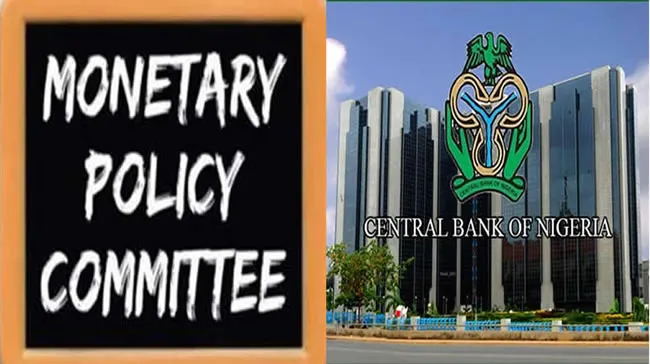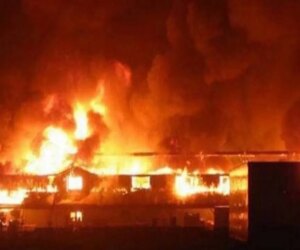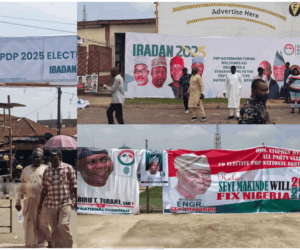13
…Project Further Monetary Easing At CBN Nov MPC Meeting
LAGOS – Nigeria may finally be witnessing the beginning of meaningful disinflation as analysts predicted that headline inflation may dip to 18.46 percent in September 2025, down sharply from 20.12 percent in August on the back of falling food costs, stable fuel price and naira appreciation.
United Capital Research said this marks a potentially significant turning point in the country’s bruising inflationary cycle.
But while the slide is encouraging, many analysts warn the path to the government’s 15 percent target will be neither direct nor smooth.
A Composite Of Moderating Pressures
United Capital attributes the expected easing in inflation to a convergence of favorable developments: falling food costs, a stable price of Premium Motor Spirit (PMS), and an appreciation of the naira versus the U.S. dollar.
According to the National Bureau of Statistics (NBS), September saw month-on-month price declines for the bulk of food items. Yellow maize fell by 3.95 percent per kilogramme, white maize by 3.57 percent, yam by 2.73 percent, brown beans by 2.35 percent, soya beans by 2.26 percent, local rice by 2.04 percent, and white beans by 1.01 percent. Imported rice also edged down by 0.42 percent. Only garri (up 1.02 percent) and sorghum (up 0.84 percent) bucked the trend.
Meanwhile, global oil movements offered little help or hindrance: Bonny Light crude dipped from about $70.55 to $70.20 per barrel. On the domestic front, the pump price of PMS held steady at N865 per litre in the monitored stations — a stability that constrains further inflationary spillovers into transport, hospitality and logistics.
Perhaps most importantly, the naira advanced roughly 2.47 percent, from an average of N1,534.75/$1 in August to N1,497.79/$1 in September. The currency gain helped ease import-cost pressures, especially on items such as rice.
Given these developments, United Capital now sees the possibility of further monetary easing. Their forecast for Q4 2025 places average inflation at 16.07 percent, slightly above the 15 percent target in the 2025 Budget, but close enough to warrant attention.
They suggest the Central Bank of Nigeria (CBN), in its November 24–25 MPC meeting, may feel compelled to cut interest rates again — assuming no new shock arises.
External Voices: Cautious But Hopeful
Razia Khan, head of research for Africa and the Middle East at Standard Chartered, described Nigeria’s September trajectory as “a welcome development” and told the Financial Times that the central bank’s recent rate cut to 27 percent already signals “more easing to come.”
Alex Sienaert, Lead Economist for Nigeria at the World Bank, recently cautioned that though growth is robust, inflation remains a central challenge.
He urged disciplined fiscal and monetary policy to consolidate gains.
Credit rating agencies are also taking note. Moody’s upgraded Nigeria’s sovereign rating to B3, citing improvements in external and fiscal metrics as inflation pressures begin to ease. But the upgrade came with caveats: the agency warned inflation and borrowing costs must remain on a downward trajectory or risk reversal.
On the local front, Paul Alaje, Chief Economist at SPM Professionals, sees the forecasts as plausible but fragile.
He said, “The 18.46 percent estimate is defensible, given the recent food price slips and a somewhat stronger naira. But that doesn’t sterilise a host of second-round risks — security disruptions, supply shocks, or further external shocks can re-ignite inflation.”
Tope Fasua, Special Adviser on Economic Affairs to President Tinubu and a noted commentator, frames the 15 percent target as aspirational. He argues that “15 percent is a stretch goal, not a floor.” Yet in media commentary, he has urged stricter checks on public spending and better revenue generation to buttress macro stability.
From a structural standpoint, the World Bank’s Nigeria Development Update (NDU) emphasises that goods-price stability must be complemented by growth-enhancing reforms in agriculture, energy, social protection, and public investment. The report underscores that while macro gains are welcome, inclusion and productivity are critical for sustaining them.
Even so, analysts stress a persistent dark shadow: Nigeria still grapples with a debt-to-GDP ratio in excess of 50 percent, huge fiscal obligations, and enduring pressures in food supply, infrastructure, and insecurity.
Risks That Could Upset The Trend
Structural and Supply Shocks: Nigeria’s agricultural output remains vulnerable to insecurity, climate stressors, and low input usage. A recent academic study showed that rising insecurity in Benue State alone can cut crop and livestock output by 0.21 percent and 0.31 percent, respectively. Should such effects spread, food inflation may reaccelerate.
External Volatility: A sudden surge in global oil prices or exchange rate pressures (e.g. capital outflows) could undermine gains from the current stability in PMS and the naira. External funding stress could also limit the central bank’s ability to defend the currency.
Fiscal Mismatch: The 2025 budget projects a steep inflation drop (from circa 34 percent to 15 percent) and substantial naira appreciation — forecasts many analysts regard as overly optimistic. The Lagos Chamber of Commerce and Industry, among others, has flagged the risk of inflation staying well above 30 percent if fiscal discipline falters. If government borrowing or deficits re-inflate, monetary tightening may reassert itself.
Monetary Tightening Backlash: The CBN has already begun loosening policy; the appetite for further cuts hinges on sustained disinflation. But if inflation refuses to fall toward 15 percent, the risk of policy reversal looms.
Assessing the Odds: The current trajectory — from 20.12 percent in August to a projected 18.46 percent in September — signals momentum. But to get to 15 percent, Nigeria must navigate a slippery, narrow path.
Optimistic Scenario
If food supply remains steady, security improves, foreign inflows continue, and the naira holds its ground, inflation could gradually move into the high-teens by Q1 2026 and approach 15 percent by mid-year. This scenario would allow the CBN greater flexibility to resume rate cuts, boosting credit and growth.
Base Scenario (More Likely)
Inflation ends 2025 around 15– 17 percent [United Capital’s 16.07 percent is already conservatively below their baseline], but fails to breach 15 percent due to lingering structural rigidities and occasional price shocks. The CBN will remain cautious.
Pessimistic Scenario
A supply shock (e.g. crop failure or fuel disruption), a reversal in naira strength, or fiscal slippage pushes inflation back above 20 percent. In that case, monetary policy would have to switch back to hawkish, stalling growth.
Implications And Outlook
If inflation continues on its course downward, consumers would feel incremental relief — especially low-income households for whom food and energy dominate budgets. For business, stable input costs and interest rates could make planning more predictable.
But the gains risk being fragile without broader reforms. To make disinflation stick,
Nigeria Must Pursue
Agricultural reforms: improving yields, reducing food supply chain friction, and better infrastructure to smooth regional price divergence.
Fiscal consolidation: curbing waste, boosting non-oil revenues, and limiting domestic borrowing that competes with private sector credit.
Monetary prudence: avoiding premature easing until the disinflation trend is firmly entrenched.
Shock buffers: maintaining strong reserves and external buffers to absorb global volatility.
Even the World Bank warns that macro stability must be leveraged to deliver inclusive growth — failing which, the price relief will be ephemeral.
For now, Stephen Iloba, an economist, said, “Nigeria finds itself in a more hopeful chapter. Disinflation is no guarantee, but the alignment of falling food prices, exchange rate relief, and stable energy costs give the economy some breathing room.
“Whether 15 percent becomes an attainable benchmark or remains a distant aspiration depends on whether policymakers and markets preserve the discipline now”.
MPC: Hope Rising
The next MPC meeting of the CBN (November 24–25) is widely anticipated as a pivot point. Many analysts will watch it closely for signs that the monetary stance has shifted decisively from hawkish to gradual accommodation — or whether the CBN waits for more evidence before acting.







